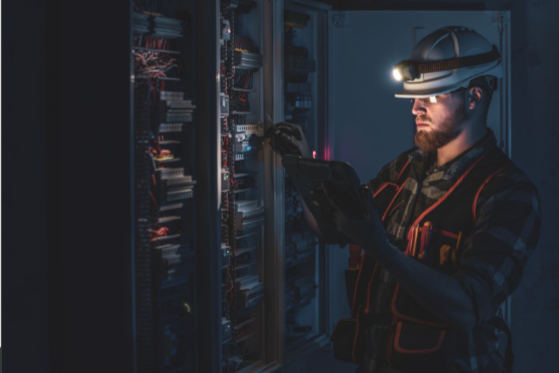Modern Electrical Safety Standards: Protecting Homes and Families in the Digital Age
Electrical safety standards have evolved dramatically over the past century, transforming from basic fire prevention measures to comprehensive protection systems that safeguard against electrocution, arc faults, ground faults, and power quality issues. Modern homes require sophisticated safety devices and installation practices that go far beyond traditional circuit breakers and fuses.
The Evolution of Electrical Safety
Early electrical systems focused primarily on preventing fires through overcurrent protection using fuses and basic circuit breakers. As understanding of electrical hazards expanded, safety standards incorporated ground fault protection, arc fault detection, and surge suppression to address a broader range of potential dangers.
Today’s electrical safety standards recognize that modern homes contain sensitive electronic equipment, medical devices, and computer systems that require protection not only from catastrophic failures but also from subtle power quality issues that can cause equipment damage or malfunction.
Ground Fault Circuit Interrupter Technology
Ground Fault Circuit Interrupters (GFCIs) revolutionized electrical safety by detecting minute electrical imbalances that indicate current leaking to ground through unintended paths, including the human body. These devices can detect ground faults as small as five milliamps and interrupt power within milliseconds.
GFCI protection is now required in virtually all wet locations including bathrooms, kitchens, laundry areas, garages, and outdoor outlets. The technology has expanded to include GFCI circuit breakers that protect entire circuits and portable GFCI devices for temporary protection in older homes.
Arc Fault Circuit Interrupter Systems
Arc Fault Circuit Interrupters (AFCIs) represent a major advancement in fire prevention technology. These sophisticated devices detect dangerous electrical arcs that can occur in damaged wiring, loose connections, or deteriorating insulation. Unlike traditional circuit breakers that only respond to overcurrent conditions, AFCIs analyze complex waveform patterns to identify arc signatures.
Modern AFCI technology distinguishes between normal arcs that occur during switch operation and dangerous arcs that can ignite fires. Combination AFCI devices provide both parallel and series arc detection, offering comprehensive protection against various arc fault scenarios.
Surge Protection Strategies
Electrical surges from lightning strikes, utility switching operations, and large motor startups can damage or destroy sensitive electronic equipment. Comprehensive surge protection involves multiple layers of protection including service entrance suppressors, panel-mounted devices, and point-of-use protectors.
Whole-house surge protectors installed at the main electrical panel provide the first line of defense against external surges. Secondary protection at individual circuits or outlets provides additional protection for valuable electronics and appliances that remain vulnerable to internal surges and residual energy.
Emergency Disconnect Requirements
Modern safety standards require clearly marked emergency disconnects that allow rapid shutdown of electrical systems during emergencies. These disconnects must be readily accessible to emergency responders and clearly labeled for immediate identification during crisis situations.
Solar photovoltaic systems require additional safety shutdowns that can rapidly reduce panel output to safe levels. Rapid shutdown devices allow firefighters and other emergency personnel to work safely on buildings equipped with solar energy systems.
Electrical Panel Safety Modernization
Contemporary electrical panels incorporate numerous safety features that weren’t available in older installations. Modern panels include main breaker protection, individual circuit protection, and provisions for GFCI and AFCI breakers. Proper labeling, adequate working space, and appropriate environmental protection are essential components of safe panel installations.
Smart electrical panels offer advanced monitoring and control capabilities that enhance safety through real-time monitoring of circuit loads, ground faults, and arc faults. These systems can provide early warning of potential problems and automatically disconnect dangerous circuits before hazardous conditions develop.
Grounding and Bonding Systems
Proper grounding and bonding create safe paths for fault currents while ensuring that metal components remain at safe voltage levels. Modern grounding systems must accommodate multiple services including electrical, telecommunications, and cable TV while maintaining effective bonding between all metallic systems.
Grounding electrode systems have become more sophisticated with requirements for multiple electrode types and specific resistance values. Water pipe connections, ground rods, and building foundation electrodes work together to create effective grounding systems.
Specialized Protection for Critical Circuits
Certain circuits require enhanced protection beyond standard safety devices. Medical equipment, security systems, and emergency lighting may need uninterruptible power supplies, isolated grounding, or special surge protection to ensure reliable operation during emergencies.
Kitchen appliance circuits require GFCI protection while also handling high-amperage loads from electric ranges and dishwashers. Specialized circuit breakers and wiring methods ensure both safety and reliable operation of these essential appliances.
Outdoor and Wet Location Safety
Outdoor electrical installations face unique challenges from weather exposure, moisture infiltration, and physical damage. GFCI protection, appropriate enclosures, and proper installation techniques are crucial for safe outdoor electrical systems.
Swimming pool and spa installations require extensive safety measures including multiple GFCI devices, equipotential bonding, and specialized grounding systems. These installations must be inspected regularly to maintain safety standards as chemicals and weather can degrade protective systems over time.
Smart Home Integration Safety
Connected homes introduce new safety considerations related to cybersecurity, device compatibility, and system reliability. Smart devices must integrate safely with traditional electrical systems while maintaining protection against both physical and digital threats.
Wireless communication systems, smart switches, and automated controls require careful installation and configuration to ensure they don’t compromise existing safety systems. Professional installation helps ensure compatibility between smart devices and traditional safety equipment.
Professional Installation and Inspection
Electrical safety depends heavily on proper installation techniques and regular inspections by qualified professionals. Complex modern safety systems require specialized knowledge and testing equipment to ensure proper operation and compliance with current codes.
Erco represents the type of professional expertise needed to implement modern electrical safety standards effectively. Qualified electricians understand the interactions between different safety systems and can ensure comprehensive protection for contemporary homes.
Maintenance and Testing Protocols
Safety devices require regular testing and maintenance to ensure continued protection. GFCI and AFCI devices should be tested monthly using their built-in test buttons, while surge protectors need periodic inspection for degraded components.
Professional inspections can identify potential safety issues before they become dangerous, including loose connections, damaged wiring, and failing protective devices. Thermal imaging and electrical testing reveal problems that aren’t visible during routine maintenance.
Code Compliance and Updates
Electrical codes continue evolving to address new technologies, improved safety understanding, and emerging hazards. Homeowners must stay informed about code changes that may affect their properties, especially when renovating or adding new electrical systems.
Local authorities having jurisdiction may adopt different versions of national codes or include local amendments that address regional concerns. Professional electricians stay current with these requirements and ensure installations meet all applicable safety standards.
Future Safety Technologies
Emerging technologies promise even greater electrical safety through advanced monitoring, artificial intelligence, and predictive maintenance systems. Smart circuit breakers with wireless communication capabilities will provide real-time system monitoring and automatic fault detection.
Arc fault detection technology continues improving with better discrimination between normal and dangerous arcs. Future systems may predict arc faults before they occur through continuous insulation monitoring and connection analysis.
Conclusion
Modern electrical safety standards represent a comprehensive approach to protecting homes and families from electrical hazards. These sophisticated systems require professional installation and regular maintenance to ensure continued protection. Homeowners who invest in current safety standards enjoy greater protection, improved reliability, and peace of mind knowing their electrical systems incorporate the latest advances in safety technology.

